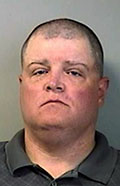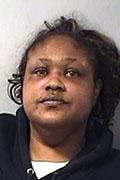With each budget revision of the Batavia City School District budget for 2019-2020, Business Administrator Scott Rozanski gets a little closer to trimming $750,000 in spending.
He said school officials are also hoping state aid will increase for the year so the district can keep the property tax levy from growing more than 4.69 percent.
In the latest revision, Rozanski has penciled in $51,118,155 in spending.
He expects about $25 million in state aid, though hoping for more, and local revenue of more than $27.4 million. That would include spending $3.1 million in fund balance with a tax levy of $20,608,000.
But that tax levy amount would mean an increase of 8.78 percent, well above the legal limit of the state's property tax law.
Over three revisions, Rozanski has already trimmed off more than $500,000 but he still needs to find enough savings to get the levy down to $19,834,000, or lower.
A levy under that amount would allow the budget to pass on a simple majority and ensure district property owners would be eligible for a tax rebate from the state in the fall.
A Tuesday's school board meeting, Rozanski said administrators and department chairs found $166,000 in purchases that could be canceled or delayed.
The district will also be able to save $120,000 by letting positions stand vacant after staff retirements.
When asked by a board member why the positions weren't being filled, Rozanski said, "We need to look at things a little bit differently in how we're operating so we're looking for savings."
Those are the kind of cuts Rozanski continues to look for in the budget. He said he doesn't anticipate any significant program cuts.
Overall, the school district expects to cut spending by more than $2.8 million but $2.1 million of that spending came from a statewide bond initiative five years ago that allowed school districts through the state to improve technology-related infrastructure. The cut in revenue and expenditure offset each other as the program comes to a close.
The other $750,000 that must be cut is the result of an NYS Comptroller audit a few years ago that found the school district was estimating revenue correctly but underestimating expenditures in its annual budgets. This was leading to a growing fund reserve. The reserve had become 7 or 8 percent of overall expenditures when it shouldn't be more than 4 percent. That money, the report noted, should be returned to taxpayers in the form of tax cuts.
The district had a reserve fund for debt service but the Comptroller said debt service should be paid out of the general fund so, over the past two years, the district has been transferring money from the debt service fund to the general fund. The debt service fund is now tapped out, hence the need to cut $750,000 in expenses.









